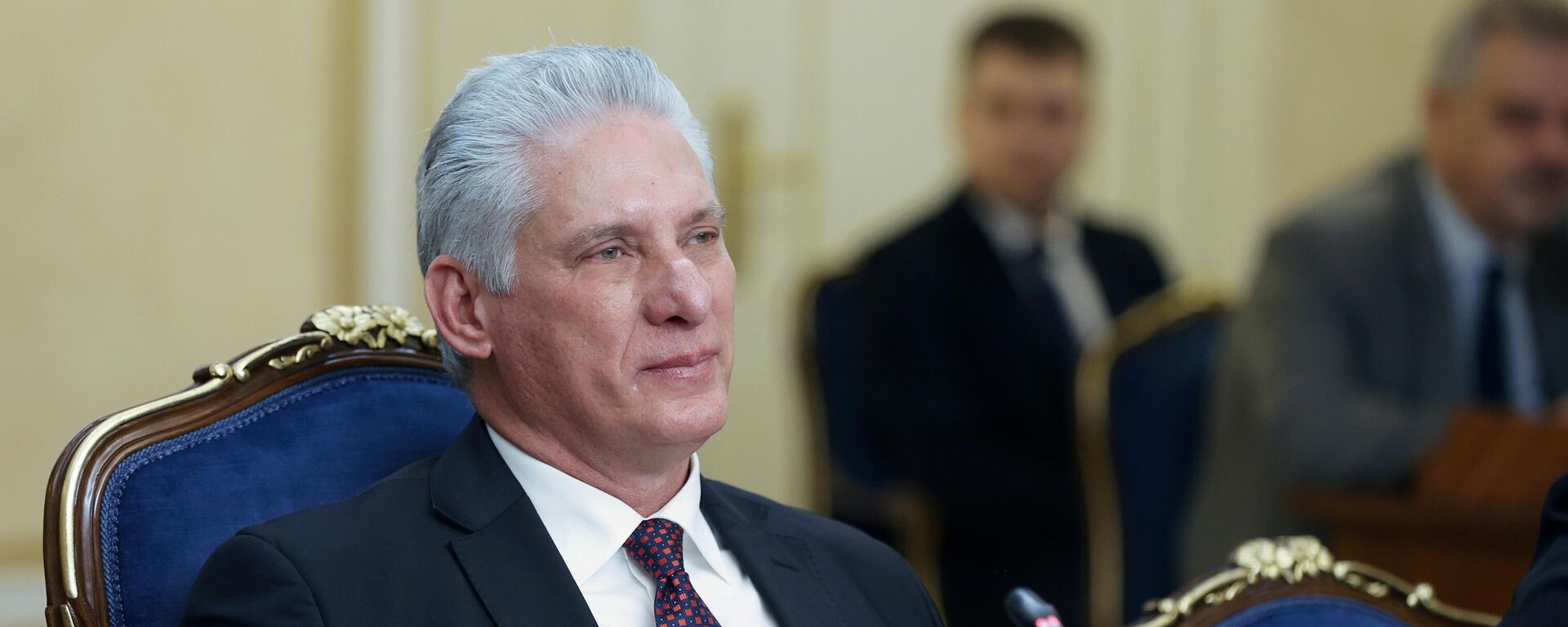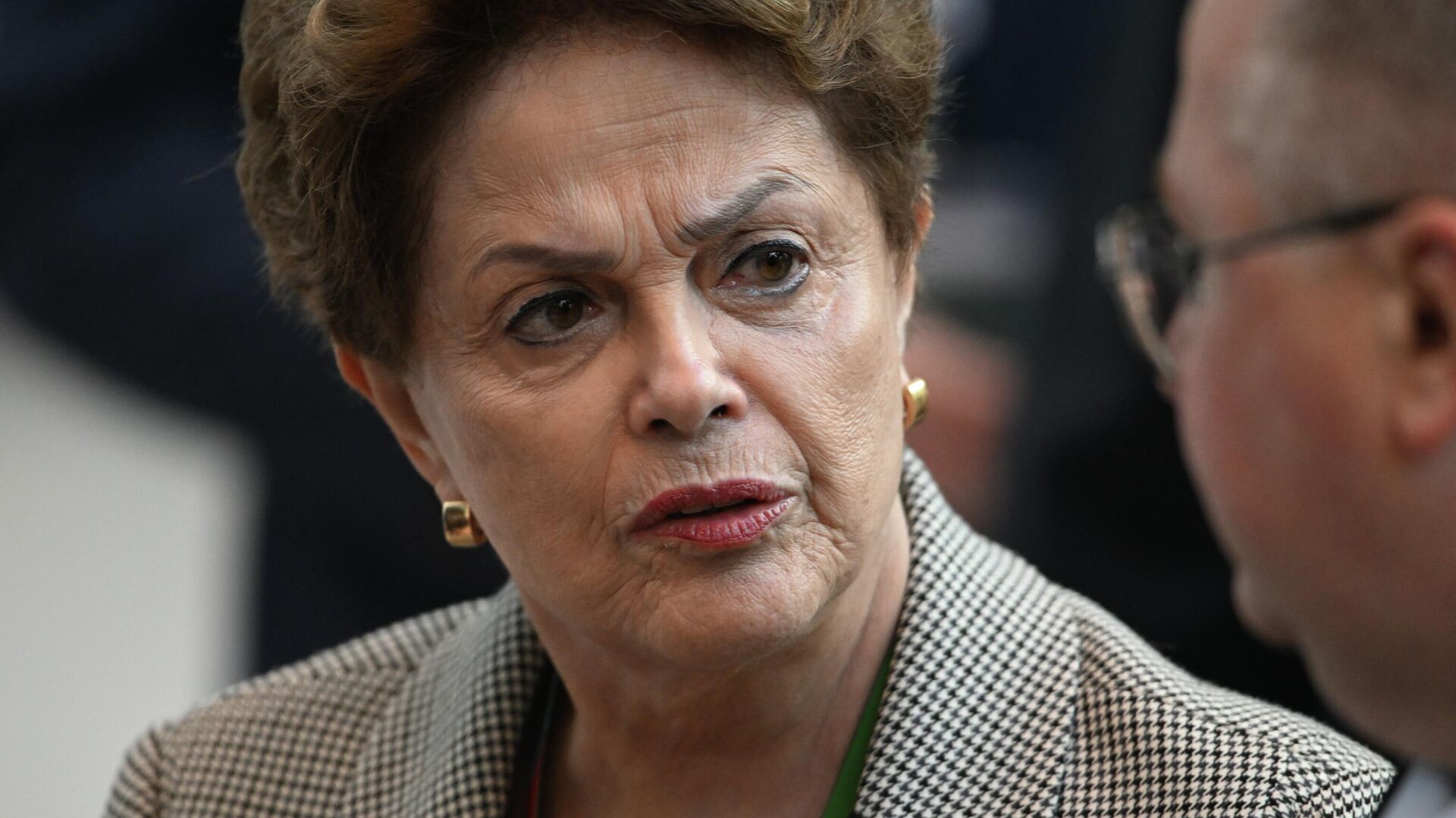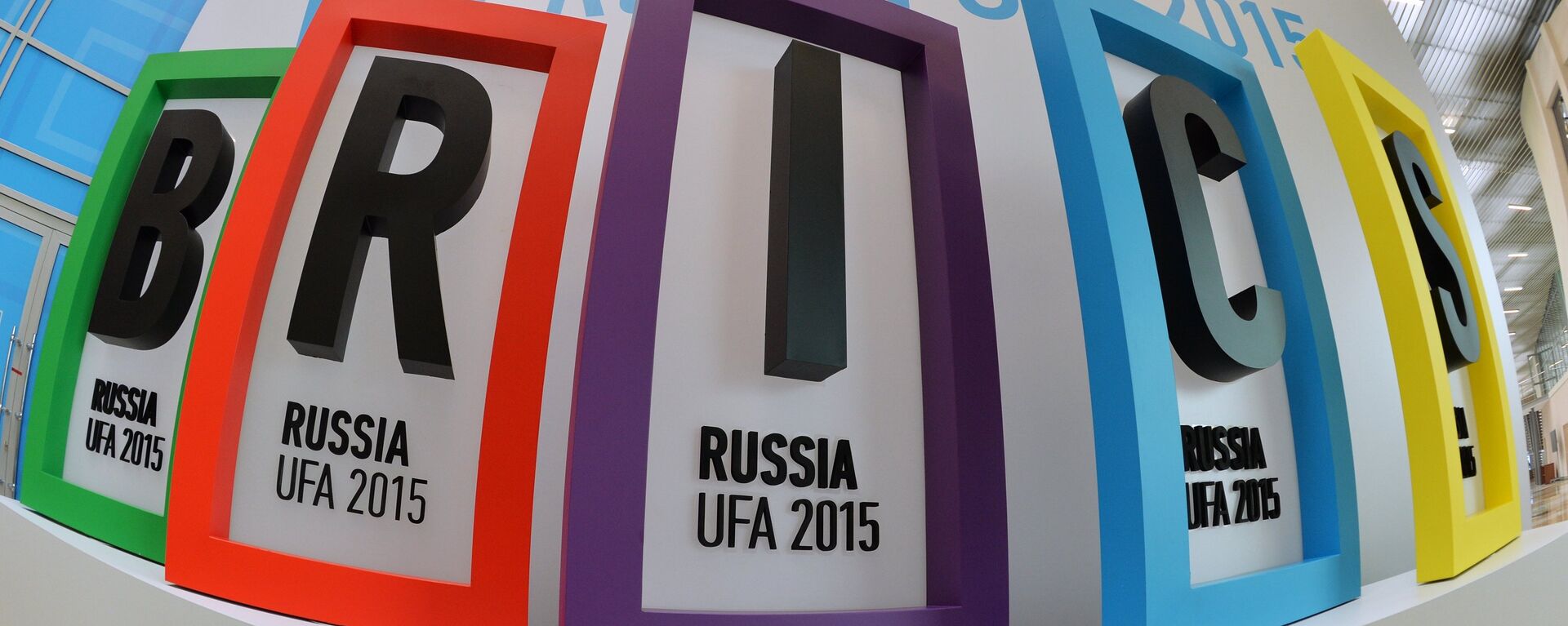https://sputnikglobe.com/20230902/where-is-the-brics-bank-located-1113072356.html
Where is the BRICS Bank Located?
Where is the BRICS Bank Located?
Sputnik International
Since the inception of the Bretton Woods system, developed countries' disproportionate influence has bludgeoned developing nations' collective plight into submitting to Western bidding. This situation has yielded to an equitable financial institution, the BRICS Bank.
2023-09-02T17:04+0000
2023-09-02T17:04+0000
2023-09-02T17:04+0000
russia
brazil
china
new development bank (ndb)
brics bank
bretton woods
brics new development bank (ndb)
brics
sputnik explains
https://cdn1.img.sputnikglobe.com/img/07e7/08/16/1112784806_0:0:3063:1722_1920x0_80_0_0_65092c8173c5725cef874df163cc1d94.jpg
The BRICS Bank, or the New Development Bank (NDB), is a financial institution founded by a consortium of emerging economies: Brazil, Russia, India, China, and South Africa.However, the NDB represents a seismic shift in the global economic landscape. The inception of the BRICS Bank marked a decisive moment, symbolizing the growing influence of emerging economies and their resolve to carve out a more equitable and inclusive path to development.Its core objective is to assist member countries and other emerging economies in sustainable development and infrastructure projects. The NDB seeks to fill funding gaps for infrastructure and development, spur economic growth, and boost cooperation among BRICS members, aiming for a more balanced global financial system.Sputnik takes a comprehensive approach to delve into the intricacies of the New Development Bank, unfurling its history, governance structure, funding sources and mechanisms, areas of focus, impact, and other fundamental data.Who Proposed the BRICS Bank?During the 4th BRICS Summit in Delhi in 2012, India suggested establishing a new development bank. This proposal became the main agenda of the meeting.Consequently, the NDB Agreement was ratified at the BRICS Summit in Fortaleza, Brazil, on July 15, 2014, and the bank officially launched on July 21, 2015.What Were the Motivations for Establishing the NDB?Founding the BRICS Bank aligns with the aspirations of its leaders, aiming to establish a more inclusive global financial structure that enhances the influence and representation of developing nations. This initiative responds to the challenges posed by existing international financial institutions, which are often dominated by Western developed economies.The aspirations of BRICS nations to establish an autonomous global financial framework within Bretton Woods institutions, irrespective of a country's political leanings and economic capacity, were thwarted. This is due to the limited voting allocations held by representatives from developing nations in international monetary organizations, diminishing their chances to influence significant decisions.Source: IBRD Subscriptions and Voting Power of Member CountriesSource: IBRD Subscriptions and Voting Power of Member CountriesThe BRICS countries aimed to reduce their reliance on Western financial institutions for funding and technical assistance. They wanted to diversify their sources of financing and gain more autonomy in pursuing their development agendas.The advent of the NDB also aimed to promote South-South cooperation, fostering closer economic ties and partnerships among developing countries. This was in line with the BRICS nations' commitment to enhancing cooperation among emerging economies.Traditional international development banks are ill-equipped to meet the rising demand for infrastructure investment (trillions of US dollars), especially from developing nations, due to their origins in a different era of global power dynamics. This raises doubts about their ability to address the needs of today's reality of a multipolar world.Where is the Location of the BRICS New Development Bank?The New Development Bank's Headquarters Building Completion Ceremony took place in Shanghai on December 17, 2020. Situated within Shanghai Expo Park, this building has now become an iconic structure along the banks of the Huangpu River.What is the Governance Structure and Model of the NDB?The senior management of the BRICS Bank comprises five persons drawn from each member state. The NDB's governance model distinguishes itself from earlier multilateral development banks (MDBs) primarily in two key ways. Firstly, each of the five founding members hold equal voting shares of 20 percent of the bank's capital. Furthermore, with new members, the five original founders will always retain at least 55 percent of the institution's voting rights.The BRICS Bank's shareholding structure ensures that all five old members have an equal say in the institution's affairs, despite substantial differences in the size of their economies.Its governance model requires most decisions to be made by a simple majority; three out of the five member countries must agree. Besides, an essential facet of this model is the rotational presidency - the NDB's leadership is rotated among all member countries.How is the BRICS New Development Bank Funded?With an initial capital of $50 billion, the NDB is equally funded by its five members, ensuring they all have equal voting rights. Over the next few years, the capital will be increased to $100 billion.While creating the New Development Bank, the BRICS nations resolved issues regarding bureaucratic bottlenecks and thickheaded operating practices via the bank’s modus operandi. One crucial aspect is the NDB's commitment to swift loan approval within six months without sacrificing quality.The NDB distinguishes itself from existing institutions by offering loans to its members in their national currency, mitigating the foreign exchange risk exposure associated with loans in foreign currencies like the greenback. China, India, and South Africa have also benefited from this approach.What are the NDB's Focus Areas?Infrastructure and sustainable development projects take precedence at the NDB, as they are geared towards fostering economic growth and enhancing the quality of life for people in all member countries, ultimately working towards a more sustainable future.The NDB will primarily focus on various sectors within infrastructure and sustainable development during the 2022-2026 period without limiting its scope to any specific areas:Projects in multiple areas - 20 and COVID-19 emergency assistance projects - 9.Note: All these projects are as of September 2, 2023.Who are the Members of BRICS New Development Bank?There are eight members (Brazil, Russia, India, China, South Africa, Bangladesh, United Arab Emirates, and Egypt) and one prospective member (Uruguay) of the BRICS Bank.How Do BRICS NDB Members Currently Stand in Infrastructure Investment?Source: Global Infrastructure Hub, 2023.Impact and Contributions of the NDBThe New Development Bank has made a substantial impact on its member countries and has also left a positive mark beyond its immediate sphere. Furthermore, the broader effects of the institution on its members include:Sustainability Initiatives: The NDB's focus on sustainable development has led to investments in clean energy, climate resilience, and environmentally responsible projects. Example: REC renewable energy sector development project in India, and the $300 million financing of renewable energy projects and associated transmission in Brazil.Reduced Reliance on Traditional Institutions: The BRICS Bank has reduced member countries' dependence on traditional Western financial organizations. It has provided an alternative funding source, allowing for more independent decision-making in pursuing development initiatives.Member Country Development: The bank has played a pivotal role in member countries' development by financing critical infrastructure and sustainable projects. It has spurred economic growth, enhanced living standards, and provided employment opportunities in these nations. For instance, projects like the $300 million sustainable infrastructure of the “ZapSibNefteKhim” Project in Russia, the Putian Pinghai Bay Offshore Wind Power Project in China, etc.Global Economic Influence: Establishing the NDB has enhanced the global economic influence of the BRICS countries. It signifies their collective commitment to reshaping the international financial landscape and challenging the dominance of Western institutions. The drive for domestic currency financing primarily seeks to diminish reliance on the US dollar and other international settlement currencies. The collaborative actions in this arena will add to the elevation of the global significance of the national currencies of NDB members.
https://sputnikglobe.com/20220623/brics-leaders-vow-to-enhance--expand-new-development-bank-1096603130.html
https://sputnikglobe.com/20230824/brics-bank-should-become-alternative-to-modern-financial-institutions---cuban-president-1112862931.html
https://sputnikglobe.com/20230727/brics-bank-intends-to-facilitate-use-of-national-currencies-in-transactions-1112190310.html
russia
brazil
china
Sputnik International
feedback@sputniknews.com
+74956456601
MIA „Rossiya Segodnya“
2023
Chimauchem Nwosu
https://cdn1.img.sputnikglobe.com/img/07e7/09/01/1113046371_0:99:1536:1635_100x100_80_0_0_9c5c627283eca931c39fe4852bbb301c.jpg
Chimauchem Nwosu
https://cdn1.img.sputnikglobe.com/img/07e7/09/01/1113046371_0:99:1536:1635_100x100_80_0_0_9c5c627283eca931c39fe4852bbb301c.jpg
News
en_EN
Sputnik International
feedback@sputniknews.com
+74956456601
MIA „Rossiya Segodnya“
Sputnik International
feedback@sputniknews.com
+74956456601
MIA „Rossiya Segodnya“
Chimauchem Nwosu
https://cdn1.img.sputnikglobe.com/img/07e7/09/01/1113046371_0:99:1536:1635_100x100_80_0_0_9c5c627283eca931c39fe4852bbb301c.jpg
bretton woods institutions, west, emerging economies, global south, brics bank, new development bank, global economic landscape, sustainable development, infrastructure projects, economic growth, cooperation, global financial system, brics summit, india, proposal, motivations, circumstances, international financial establishments, voting allocations, western financial institutions, south-south cooperation, governance structure, funding, member countries, national currency, focus areas, clean energy, transport infrastructure, water and sanitation, environmental protection, social infrastructure, digital infrastructure, members, infrastructure investment, impact, contributions, sustainability initiatives, reduced reliance, member country development, global economic influence, national currencies, dilma rousseff, vladimir kazbekov, anil kishora, qiangwu zhou, leslie maasdorp, brazil, russia, india, china, south africa, canada, france, germany, italy, japan, united kingdom, united states, bangladesh, united arab emirates, egypt, uruguay
bretton woods institutions, west, emerging economies, global south, brics bank, new development bank, global economic landscape, sustainable development, infrastructure projects, economic growth, cooperation, global financial system, brics summit, india, proposal, motivations, circumstances, international financial establishments, voting allocations, western financial institutions, south-south cooperation, governance structure, funding, member countries, national currency, focus areas, clean energy, transport infrastructure, water and sanitation, environmental protection, social infrastructure, digital infrastructure, members, infrastructure investment, impact, contributions, sustainability initiatives, reduced reliance, member country development, global economic influence, national currencies, dilma rousseff, vladimir kazbekov, anil kishora, qiangwu zhou, leslie maasdorp, brazil, russia, india, china, south africa, canada, france, germany, italy, japan, united kingdom, united states, bangladesh, united arab emirates, egypt, uruguay
The BRICS Bank, or the New Development Bank (NDB), is a financial institution founded by a consortium of emerging economies: Brazil, Russia, India, China, and South Africa.
However, the NDB represents a seismic shift in the global economic landscape. The inception of the BRICS Bank marked a decisive moment, symbolizing the growing influence of emerging economies and their resolve to carve out a more equitable and inclusive path to development.
Its core objective is to assist member countries and other emerging economies in sustainable development and infrastructure projects. The NDB seeks to fill funding gaps for infrastructure and development, spur economic growth, and boost cooperation among BRICS members, aiming for a more balanced global financial system.
Sputnik takes a comprehensive approach to delve into the intricacies of the New Development Bank, unfurling its history, governance structure, funding sources and mechanisms, areas of focus, impact, and other fundamental data.
Who Proposed the BRICS Bank?
During the 4th BRICS Summit in Delhi in 2012, India suggested establishing a new development bank. This proposal became the main agenda of the meeting.
Consequently, the NDB Agreement was ratified at the BRICS Summit in Fortaleza, Brazil, on July 15, 2014, and the bank officially launched on July 21, 2015.
What Were the Motivations for Establishing the NDB?
Founding the BRICS Bank aligns with the aspirations of its leaders, aiming to establish a more inclusive global financial structure that enhances the influence and representation of developing nations. This initiative responds to the challenges posed by existing international financial institutions, which are often dominated by Western developed economies.
The
aspirations of BRICS nations to establish an autonomous global financial framework within Bretton Woods institutions, irrespective of a country's political leanings and economic capacity, were thwarted. This is due to the limited voting allocations held by representatives from developing nations in international monetary organizations, diminishing their chances to influence significant decisions.
Comparative Analysis of the BRICS % of Voting shares in the IBRD and in NDB as of August 31, 2023.
Countries | % of Total Voting Power | % of Vote Share in NDB |
Brazil | 1.94 | 20 |
Russia | 2.86 | 20 |
China | 5.57 | 20 |
India | 3.08 | 20 |
South Africa | 0.77 | 20 |

24 August 2023, 17:18 GMT
G7 voting shares in the IBRD as of August 31, 2023.
Countries | % of Total Voting Power |
Canada | 2.55 |
France | 3.91 |
Germany | 4.27 |
Italy | 2.49 |
Japan | 7.18 |
United Kingdom | 3.91 |
United States | 15.71 |
The BRICS countries aimed to reduce their reliance on Western financial institutions for funding and technical assistance. They wanted to diversify their sources of financing and gain more autonomy in pursuing their development agendas.
The advent of the NDB also aimed to promote South-South cooperation, fostering closer economic ties and partnerships among developing countries. This was in line with the BRICS nations' commitment to enhancing cooperation among emerging economies.
Traditional international development banks are ill-equipped to meet the rising demand for infrastructure investment (trillions of US dollars), especially from developing nations, due to their origins in a different era of global power dynamics. This raises doubts about their ability to address the needs of today's reality of a multipolar world.
Where is the Location of the BRICS New Development Bank?
The
New Development Bank's Headquarters Building Completion Ceremony took place in Shanghai on December 17, 2020. Situated within Shanghai Expo Park, this building has now become an iconic structure along the banks of the Huangpu River.
What is the Governance Structure and Model of the NDB?
The senior management of the BRICS Bank comprises five persons drawn from each member state.
Russia: Vladimir Kazbekov - Vice-President and Chief Operating Officer
India: Anil Kishora - Vice-President and Chief Risk Officer
China: Qiangwu Zhou - Vice-President and Chief Administrative Officer
South Africa: Leslie Maasdorp - Vice-President and Chief Financial Officer
The NDB's governance model distinguishes itself from earlier multilateral development banks (MDBs) primarily in two key ways. Firstly, each of the five founding members hold equal voting shares of 20 percent of the bank's capital. Furthermore, with new members, the five original founders will always retain at least 55 percent of the institution's voting rights.
The BRICS Bank's shareholding structure ensures that all five old members have an equal say in the institution's affairs, despite substantial differences in the size of their economies.
Its governance model requires most decisions to be made by a simple majority; three out of the five member countries must agree. Besides, an essential facet of this model is the rotational presidency - the NDB's leadership is rotated among all member countries.
How is the BRICS New Development Bank Funded?
With an initial capital of $50 billion, the NDB is equally funded by its five members, ensuring they all have equal voting rights. Over the next few years, the capital will be increased to $100 billion.
While creating the New Development Bank, the BRICS nations resolved issues regarding bureaucratic bottlenecks and thickheaded operating practices via the bank’s modus operandi. One crucial aspect is the NDB's commitment to swift loan approval within six months without sacrificing quality.
The NDB distinguishes itself from existing institutions by
offering loans to its members in their national currency, mitigating the foreign exchange risk exposure associated with loans in foreign currencies like the greenback. China, India, and South Africa have also benefited from this approach.
What are the NDB's Focus Areas?
Infrastructure and sustainable
development projects take precedence at the NDB, as they are geared towards fostering economic growth and enhancing the quality of life for people in all member countries, ultimately working towards a more sustainable future.
The NDB will primarily focus on various sectors within infrastructure and sustainable development during the 2022-2026 period without limiting its scope to
any specific areas:
Clean energy and energy efficiency - 16 projects
Transport infrastructure - 53 projects
Water and sanitation - 18 projects
Environmental protection - 4 projects
Social Infrastructure - 5 projects
Digital infrastructure - 1 project
Projects in multiple areas - 20 and COVID-19 emergency assistance projects - 9.
Note: All these projects are as of September 2, 2023.
Who are the Members of BRICS New Development Bank?
There are eight members (Brazil, Russia, India, China, South Africa, Bangladesh, United Arab Emirates, and Egypt) and one prospective member (Uruguay) of the BRICS Bank.
How Do BRICS NDB Members Currently Stand in Infrastructure Investment?
Infrastructure Investment at Current Trends and Needs (2023)
Country | Current Trends ($) | Investment Need ($) |
Brazil | 56 billlion | 97 billlion |
Russia | 40 billlion | 65 billlion |
India | 137 billlion | 154 billion |
China | 942 billlion | 1.0 trillion |
South Africa | 11 billion | 16 billion |
Bangladesh | 15 billion | 21 billion |
United Arab Emirates | No data | No data |
Egypt | 16 billion | 24 billion |
Impact and Contributions of the NDB
The New Development Bank has made a substantial impact on its member countries and has also left a positive mark beyond its immediate sphere. Furthermore, the broader effects of the institution on its members include:
Sustainability Initiatives: The NDB's focus on sustainable development has led to investments in clean energy, climate resilience, and environmentally responsible projects. Example:
REC renewable energy sector development project in India, and the $300 million
financing of renewable energy projects and associated transmission in Brazil.
Reduced Reliance on Traditional Institutions: The BRICS Bank has reduced member countries' dependence on traditional Western financial organizations. It has provided an alternative funding source, allowing for more independent decision-making in pursuing development initiatives.
Member Country Development: The bank has played a pivotal role in member countries' development by financing critical infrastructure and sustainable projects. It has spurred economic growth, enhanced living standards, and provided employment opportunities in these nations. For instance, projects like the $300 million sustainable infrastructure of
the “ZapSibNefteKhim” Project in Russia,
the Putian Pinghai Bay Offshore Wind Power Project in China, etc.
Global Economic Influence: Establishing the NDB has
enhanced the global economic influence of the BRICS countries. It signifies their collective commitment to reshaping the international financial landscape and challenging the dominance of Western institutions. The drive for domestic currency financing primarily seeks to diminish reliance on the US dollar and other international settlement currencies. The collaborative actions in this arena will add to the elevation of the global significance of the national currencies of NDB members.






